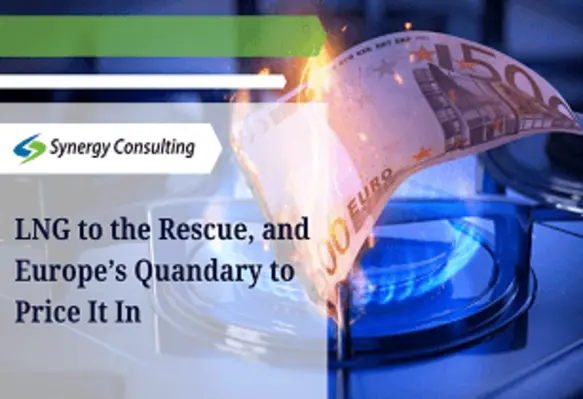As Northwest Europe enters the peak winter season this month, after rejecting its decades-old safety net of Russian gas supplies, it has to increasingly rely on LNG shipments from Asia and the USA in order to keep its lights on, homes warm, and factories humming
For now at least, this reliance on LNG imports, as fiscally bruising it might be, seems to have served the purpose, with the continent facing no major blackouts or undue disruption to daily life. And this is largely due to the Eurozone countries tapping into their gas reserves, most of which had been amply replenished during this year’s unusually warm summer season. Since the start of the month, underground storage inventories across the Eurozone have declined slightly from about 94% of capacity to 91%, with floating storage inventories at sea also having been drawn down.
Surging LNG imports have been able to offset the loss of piped Russian gas, and inward volumes have topped 11 million tonnes (MMT) for the first time ever in November, as nearly 11.14 MMT was delivered to terminals in the UK and continental Europe, up 50% from the start of the year. Going forward too, the outlook too looks robust, with over 55 laden vessels confirmed for discharge at different European terminals in December and several more in the pipeline.
This has propelled European gas prices northwards, with the benchmark Dutch TTF clocking 60% YTD gains, rising from nearly US$26/ Million British Thermal Units (MMBtu) at the start of this year to now settling at US$42/ MMBtu – still comfortably below its peak of around US$85/ MMBtu seen in end August.
And this, whilst providing succour to its citizens as well as its industrial base, has heightened the cost burden on individual European economies with skyrocketing gas prices which are a staggering 14 times higher than two years ago! The sharp uptick in prices has fuelled inflation and destabilised eurozone financial markets, with energy-intensive businesses either shutting down or looking to pull back on operations. According to some analysts, if governments in Europe do nothing except offer financial support and if they cover the price increases, this sum would represent a colossal 6% of the annual GDP of the EU.
The worst, as they say, is yet to come, and the litmus test will be evident in the following weeks once the deep cold season sets in and countries are expected to dig in deeper into their reserves to offset the inevitable domestic demand spike. Europe will then have to compete with Asian economies, which, after a brief lull, have kickstarted their hunt for the supercooled fuel. In a sign that demand is picking up, China’s biggest LNG importer, CNOOC, issued a tender this week to buy cargoes for the first time since the Ukraine war began.
In order for Europe to continue to draw the majority of LNG cargoes in competition with the other major demand centres in Asia, they will have to pay top dollar, and gas prices could remain inflated in the run up to the next winter… thus leading to an expensive 2023 for the continent.
This article is authored by Synergy Consulting IFA.









